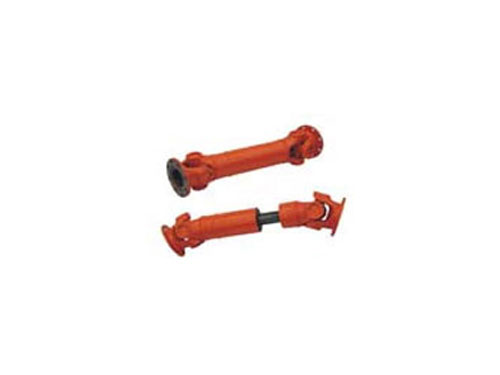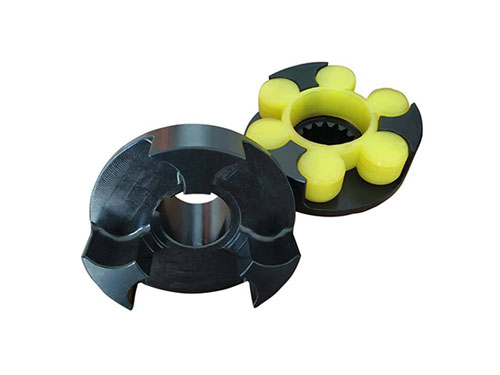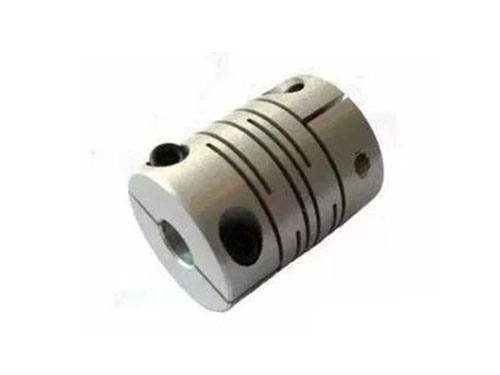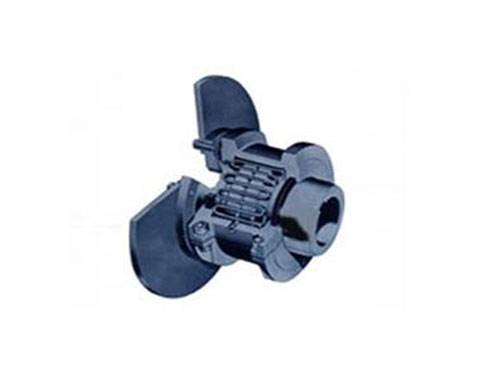 SWP-B type has telescopic short universal couplingDue to manufacturing, installation, load deformation and...
SWP-B type has telescopic short universal couplingDue to manufacturing, installation, load deformation and... WGT type gear coupling with intermediate sleeveWGT type connecting middle sleeve gear coupling is working...
WGT type gear coupling with intermediate sleeveWGT type connecting middle sleeve gear coupling is working... LMZ-ⅡPlum-shaped elastic coupling with brake wheelLMZ-Ⅱ (formerly MLL-Ⅱ) type with brake wheel plum...
LMZ-ⅡPlum-shaped elastic coupling with brake wheelLMZ-Ⅱ (formerly MLL-Ⅱ) type with brake wheel plum... Rigid couplingThe characteristics of rigid coupling: rigid coupling...
Rigid couplingThe characteristics of rigid coupling: rigid coupling... JSP type coupling with brake discJSP type couplings with brake discs generally should...
JSP type coupling with brake discJSP type couplings with brake discs generally should...Fixing method and structural characteristics of plum coupling
The plum blossom coupling is a widely used coupling, also called a claw coupling, which is composed of two metal claw discs and an elastic body.The two metal claws are generally made of No. 45 steel, but aluminum alloys are also useful when load sensitivity is required.The working principle is to install an integral quincunx-shaped elastic ring between the protruding claws of two half-couplings of the same shape to realize the connection of the two half-couplings.This coupling is commonly used in water pumps, oil pumps, machine tools and other industries.The power is transmitted through the extrusion between the protruding pawl and the elastic ring, and the relative deviation of the two shafts is compensated by the elastic deformation of the elastic ring to realize damping and buffering.The plum blossom coupling has simple structure, small radial size, light weight, and small moment of inertia. It is suitable for medium and high speed applications. The plum blossom coupling works stably and has good vibration damping, buffering and electrical insulation properties.With large axial, radial and angular compensation capabilities, the polyurethane elastic element of the plum coupling is oil-resistant, has a large load-bearing capacity, a long service life, does not require lubrication, requires less maintenance, and can run continuously for a long time.
There are two main types of plum blossom couplings, one is the traditional straight claw type, and the other is the curved (inward) claw type zero-backlash coupling.The old-fashioned straight-jaw plum coupling is not suitable for use in high-precision servo transmission applications.The zero-backlash claw type plum blossom coupling is evolved on the basis of the straight claw type, but the difference is that its design can be suitable for the application of the servo system, and is often used to connect servo motors, stepping motors and ball screws.The curved surface is to reduce the deformation of the elastic plum spacer and limit the influence of centripetal force on it during high-speed operation.The zero-clearance claw coupling is composed of two metal sleeves (usually made of aluminum alloy, stainless steel can also be provided) and a plum blossom elastic spacer.
The plum blossom elastic spacer has multiple leaf branches. Like a slider coupling, it also squeezes the plum blossom elastic spacer to match the sleeves on both sides, and thus determines its zero clearance performance.Different from the slider coupling, the plum blossom coupling is driven by squeezing while the slider coupling is driven by shear.When using the zero-clearance claw coupling, the user should pay attention not to exceed the large bearing capacity of the elastic element given by the manufacturer (under the premise of determining the zero-clearance), otherwise the quincunx elastic spacer will be squashed and deformed and lose its elasticity , The preload disappears, resulting in the loss of zero-gap performance, and users may only find out after serious problems occur.
Fixing method and structural characteristics of plum coupling
(1) The fixing methods include top wire, clamping, and keyway fixing;
(2) Vibration can be absorbed, and radial and angular deviations can be compensated;
(3) Plum blossom elastomer has four petals, six petals, eight petals and ten petals;
(4) Maintenance-free, oil-resistant and electrical insulation, working temperature 20℃-60℃;
(5) Compact type, no backlash, providing three kinds of elastomers with different hardness;
(6) Simple structure, convenient maintenance and easy inspection;
The choice of coupling for the reducer is mainly to consider the speed of the required transmission shaft, the size of the load, the installation progress of the two parts to be connected, the stability of rotation, the price, etc., and choose one according to the characteristics of various couplings Appropriate coupling type.Torx couplings belong to the category of general mechanical parts and are used to connect two shafts (active shaft and driven shaft) in different mechanisms to make them rotate together to transmit torque.Because elasticity has the function of buffering and damping vibration, it is used more in situations with strong vibration.Determines the use temperature of the coupling, has good versatility, and has a wide range of applications, so it is easy to use and promote.
The plum blossom coupling is driven by squeezing and the slider coupling is driven by shear.It also squeezes to make the plum elastic spacer and the shaft sleeves on both sides coincide, so as to realize the connection of the two halves of the slider coupling.Good damping performance, simple structure, stable work, no noise, no lubrication, simple maintenance, convenient assembly and unloading, good manufacturability, low cost, can be derived into a variety of structural forms, transmitted through the extrusion between the claw and the elastic ring Power, through the elastic deformation of the elastic ring to compensate the relative deviation of the two shafts, to achieve vibration reduction and buffering.
The working speed and the size of the centrifugal lining caused by the coupling, the speed range of the coupling is determined by calculation according to the allowable limit speed and the large outer circle size of the different materials of the coupling. The couplings of different materials and specifications The allowable speed range is different. Changing the material of the coupling can increase the allowable speed range of the coupling. The required speed for steel is greater than the required speed for cast iron.Non-metal elastic element elastic couplings should not be used at high speeds, but flexible couplings that form elastic element deformations should be selected.